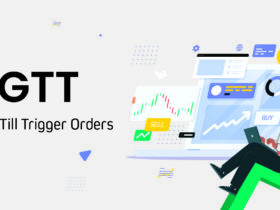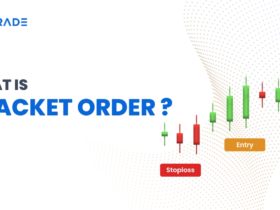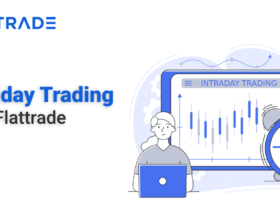While trading on the National Stock Exchange (NSE), investors most commonly find various series tags with stock symbols – i.e., EQ, BE, BL, BT, GC, and IL. These series tags, or series codes, specify the nature of the trading mechanism or settlement process that applies to the relevant stock. Having an understanding of what these series signify prevents investors from making unwanted trades and allows for improved trading choices. Let’s have a comprehensive overview of what each of these NSE series signifies.
EQ Series - Equity Segment
The most widely used is the EQ series, which is the normal equity trading segment where intraday as well as delivery-based trades are permitted. This is the default series for the majority of actively traded stocks on NSE and allows strategies such as intraday trading, short selling, and BTST (Buy Today Sell Tomorrow). Settlement in this segment occurs on a T+1 basis, making it suitable for retail as well as institutional investors.
BE Series – Book Entry Series
BE series is allotted to those stocks that are under trade-to-trade settlement, and delivery-based trading is permitted, while intraday trading is not permitted. BE series stocks are usually kept under watch because of high volatility or speculative danger, and investors have to take delivery of shares after buying. Same-day selling is not permitted, and such selling may result in auction penalties.
BL Series – Block Deal Segment
The BL series is meant for big institutional trades referred to as block deals. They are prearranged high-volume transactions with a minimum size of ₹5 crores traded in separate windows to prevent distorting the market price. They are negotiated in private between parties and then reported to the exchange, offering transparency without disturbing the market.
BT Series – Buy Today Settlement
BT series is employed for specific instances dealing with special settlement arrangements, frequently related to Buy Today, Sell Tomorrow schemes or other short-term requirements. It is not a regular series encountered during normal trading and is triggered only under specific conditions determined by the exchange.
GC Series – Government Securities Segment
GC series is government securities eligible for retail trading, including Treasury Bills, State Development Loans, and Government Bonds. These are low-risk instruments traded via the retail debt platform of the NSE, providing a secure investment avenue with guaranteed returns, more appropriate for conservative investors.
IL Series – Institutional Lending (SLB Segment)
The IL series pertains to the Stock Lending and Borrowing (SLB) facility under which the investors provide their shares for lending to other institutions or traders. It helps lenders receive a fee for offering shares while borrowers utilize them for arbitrage or short-selling purposes. It’s a system that’s regulated and provides depth and liquidity to the market.
Each NSE series has a distinct role and trading regulation associated with it. Here’s a quick summary table:
| Series | Representation | Trading |
|---|---|---|
| EQ | Equity | Delivery-based and intraday trading is allowed. |
| BE | Book Entry | Only delivery-based trading is permitted; intraday trading is not allowed. |
| BL | Block Deals | Trades executed through a single transaction with: i. A minimum quantity of 5 lakh shares, OR ii. Value of Rs. 5 crores Block deals are allowed only from 9:15 a.m. to 9:50 a.m. |
| BT | Shares held in physical form | Provides an exit route to small investors with a maximum of 500 shares held in physical form. |
| BZ | Stocks that are blacklisted for violation of exchange rules | Stocks that fall under the Trade-to-Trade (T2T) category. Buy Today Sell Tomorrow (BTST) and intraday trading of such stocks is not allowed. |
| GC | Government Securities and Treasury Bills | Exchange-traded government securities and treasury bills. |
| IL | Facilitates Foreign Institutional Investors (FIIs) to trade among themselves | Permitted for securities whose maximum limit for FII trading is not breached. |
| IQ | Qualified Foreign Investors (QFIs) | Securities QFIs can trade without prior depository approval. |
| D1 | Fully convertible debentures | Only delivery-based trading is permitted; intraday trading is not allowed. |
| GS | Government securities | Only delivery-based trading is permitted; intraday trading is not allowed. |
| N0, N1, N2, N3, N4, N5, N6, N7, N8, N9, N10, NA, NB, NC, ND, NE, NF, NG, NH, NI, NJ, NK, NL, NM, NN, NO, NP, NQ, NR, NS, NT, NU, NV, NW, NX, NY, NZ | Non convertible debentures | Only delivery-based trading is permitted; intraday trading is not allowed. |
| SG | Fully convertible debentures with compulsory delivery (Trade for Trade) | Only delivery-based trading is permitted; intraday trading is not allowed. |
| TB | Treasury bills | Only delivery-based trading is permitted; intraday trading is not allowed. |
| Y0, Y1, Y2, Y3, Y4, Y5, Y6, Y7, Y8, Y9, YA, YB, YC, YD, YE, YF, YG, YH, YI, YJ, YK, YL, YM, YN, YO, YP, YQ, YR, YS, YT, YU, YV, YW, YX, YY, YZ | Non convertible debentures | Only delivery-based trading is permitted; intraday trading is not allowed. |
| Z0, Z1, Z2, Z3, Z4, Z5, Z6, Z7, Z8, Z9, ZA, ZB, ZC, ZD, ZE, ZF, ZG, ZH, ZI, ZJ, ZK, ZL, ZM, ZN, ZO, ZP, ZQ, ZR, ZS, ZT, ZU, ZV, ZW, ZX, ZY, ZZ | Non convertible debentures | Only delivery-based trading is permitted; intraday trading is not allowed. |
Every NSE series has a distinct function to perform in India’s capital market ecosystem, catering to distinct types of investors and transactional needs. Whereas EQ and BE series are used most typically by retail traders, the BL, BT, GC, and IL series are for institutional transactions, fixed-income products, or lending. Know about these series to make informed and compliant transactions.





